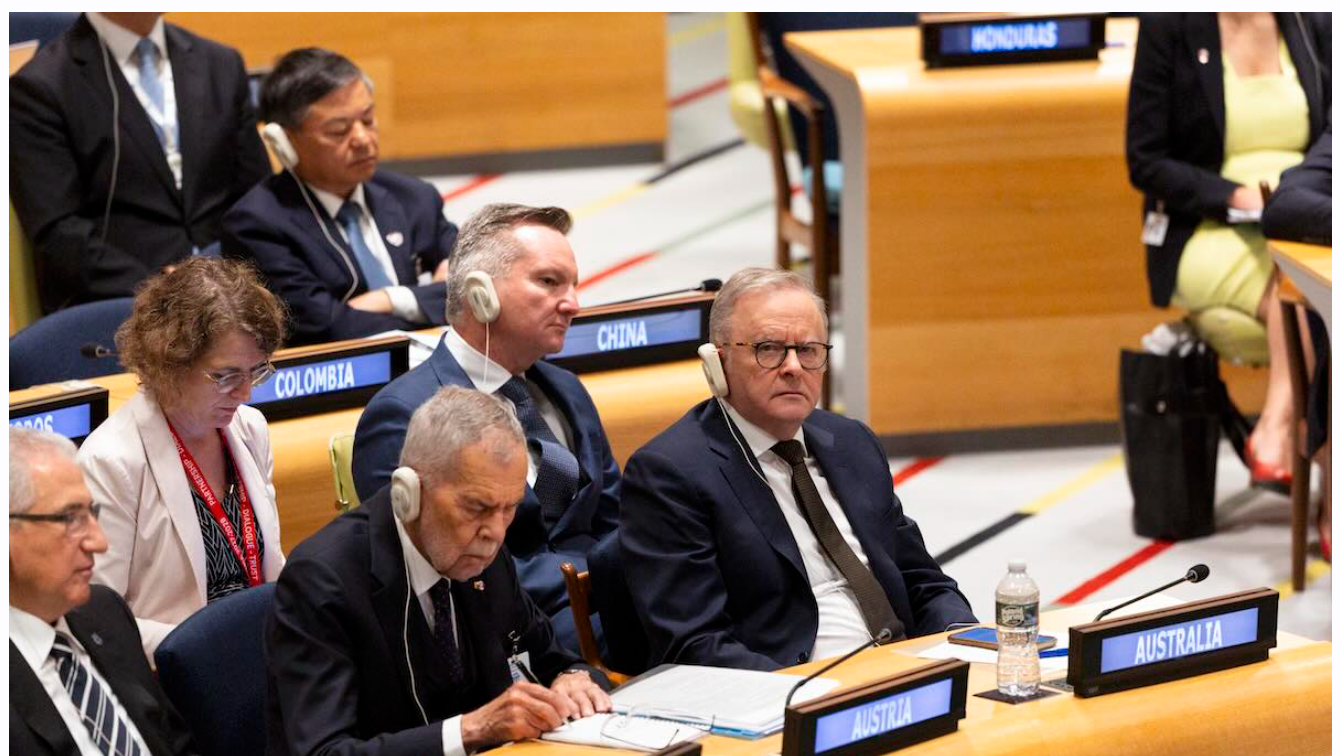China surprises, and disappoints, with first emission cut pledge, and “modest” wind and solar target of 3,600 GW

China, the world’s largest emitter of greenhouse gases, has announced its first ever emissions reduction target – a cut of up to 10 per cent by 2035 – and a staggering new plan for wind and solar.
The new target was announced in a surprise appearance – via video link – by Chinese president Xi Jinping at the United Nations high-level climate summit in New York on Wednesday.
The 2035 target was set as a reduction of between 7 and 10 per cent – although the baseline was not made clear. Analysts said it is less than what’s required for the world to cap average global warming at around 1.5°C, but noted China tends to under promise and over-deliver, and said the new target was hugely significant.
Xi pledged that China would increase its wind and solar power sixfold from 2020 levels, to a new target of 3,600 gigawatts (GW) by 2035, make emissions-free vehicles mainstream and “basically establish a climate adaptive society”.
He also said China would increase the share of non fossil fuels in total energy consumption – which includes electricity and other energy use for transport and industry – to more than 30 per cent by 2035.
“This pledge ensures China will continue to install solar and wind at mega-scale,” said Dave Jones, chief analyst at climate-focused think tank Ember.
“China has explicitly named solar, wind and EVs at the heart of its NDC. China has been leading the world on solar and wind, and these are already successfully meeting most of the country’s growth in energy demand. “
“Now solar and wind can help bring China to the next phase – to begin cutting emissions. Solar and wind are not a scam, they are the real deal.”
Lauri Mylliverta, the co-founder of the Centre for Research on Energy and Clean Air, and a recognised expert on China’s energy industry, said the new targets were a positive gesture, but actually undersold the current clean energy boom.
“This target falls far short of what would be required to align with the Paris Agreement – emission reduction of at least 30% from 2024 levels,” he said, noting that the current run rate of clean energy additions would actually enable the country to deliver on the science based target.
“The target for solar and wind capacity of 3,600 GW by 2035 would mean a sharp slowdown of recent trends,” Mylliverta noted. “Meeting the target requires less than 200 GW of solar and wind per year, vs. 360 GW added in 2024 and more expected this year – the target is likely to be exceeded dramatically.
“The target for non-fossil energy, 30% of total energy consumption by 2035, is similarly much lower than the share of over 40% that could be achieved by maintaining the current rate of clean energy additions.
“My reading is that this is a set of targets prepared by a conservative bureaucracy that Xi did not choose to override this time. Today’s announcement should be seen as setting a floor, not a ceiling, for China’s ambition.
Xi’s surprise intervention came as more than 100 world leaders, including Australia’s Anthony Albanese, gathered to talk of increased urgency and the need for strong efforts to curb fossil fuels.
Albanese welcomed Xi’s intervention, although he said China needed to do more to deliver its share of the 1.5°C target. Many climate analysts say the same of Australia.
Europe followed Xi with a less detailed and not quite official new climate change fighting plan.
Ursula von der Leyen, president of the European Commission, said their infrastructure and investment in renewable energy and the price of carbon dioxide had all increased, and their emissions are down nearly 40 per cent since 1940.
Last week, EU member states agreed that their nationally determined contribution would range between 66 per cent and 72 per cent, and that they would formally submit their plan before the November negotiations, she said.
Xi and Brazilian President Luiz Inácio Lula da Silva, who is hosting the upcoming UN climate conference, took thinly veiled swipes at US President Donald Trump’s opposition a day earlier to renewable energy and the concept of climate change.
“While some country is acting against it, the international community should stay focused on the right direction,” Xi said.
“No one is safe from the effect of climate change,” Lula said. “Walls at borders will not stop droughts or storms. Nature does not bow down to bombs or warships. No country stands above another. All of us may lose because denialism may actually win.”
Earlier, climate scientist Johan Rockstrom said in a science briefing that started the summit that global warming appears to be accelerating.
“Here we must admit failure. Failure to protect peoples and nations from unmanageable impacts of human-induced climate change,” he said. “We’re dangerously close to triggering fundamental and irreversible change,” Rockstrom said.
Before 2015, the world was on path for 4C of warming since pre-industrial times but now has trimmed that to 2.6C, Guterres said.
However, the Paris accord set a goal of limiting warming to 1.5C since the mid 19th century and the world has already warmed about 1.3C since.
With AAP and wires.
More information:https://reneweconomy.com.au/china-surprises-and-disappoints-with-first-emission-cut-pledge-and-modest-wind-and-solar-target-of-3600-gw/


